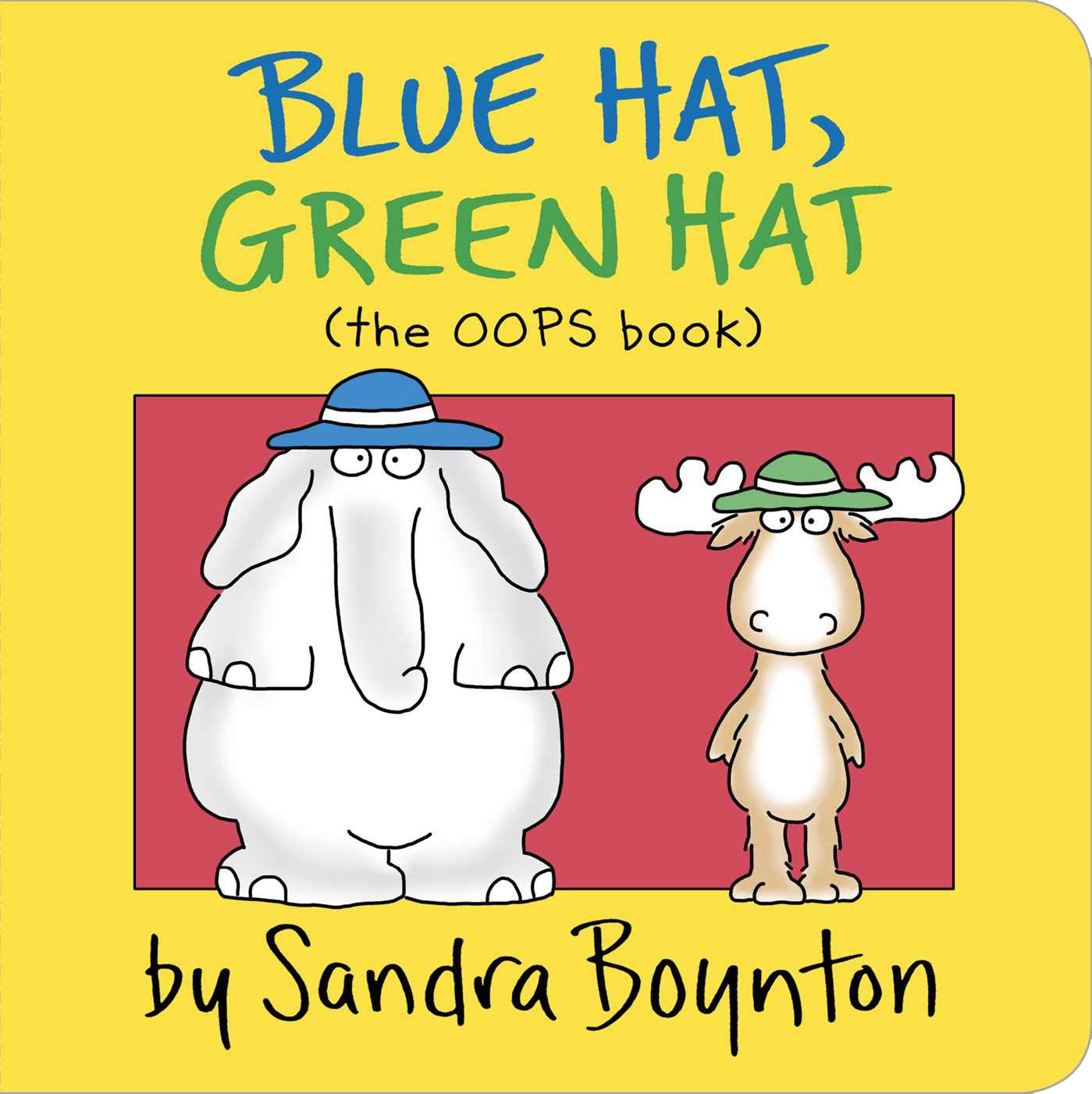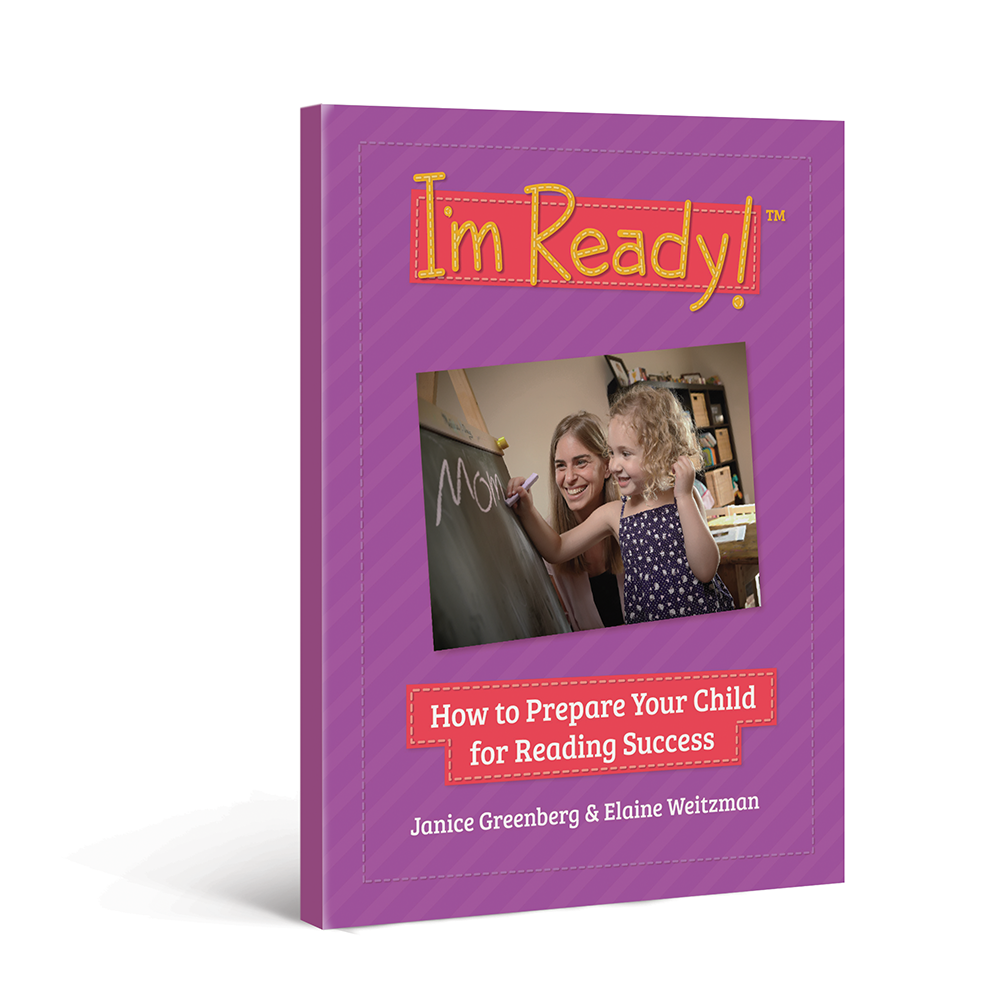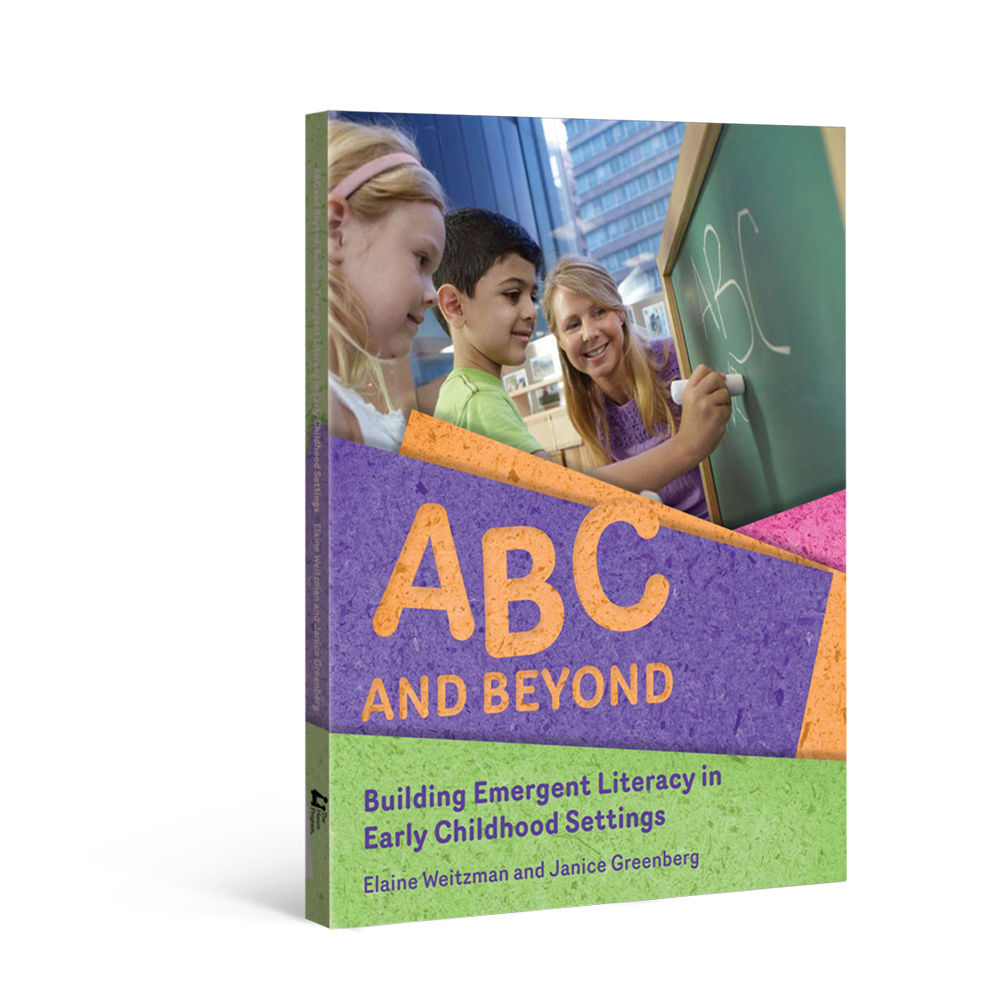This month's Book Nook topic is...
Turning Book Reading into a Conversation with Blue Hat, Green Hat

Turning book reading into a time for interaction and conversation is a great way to boost your child’s vocabulary and early literacy skills! This means stopping to have conversations with your child while you look at a book, instead of reading it from start to finish. In this Book Nook, we’ll look at how you can turn book reading into a conversation with your child, and we’ll talk about just a few of the things your child might learn when you do this.
Let’s get started!
The Book:
Blue Hat, Green Hat by Sandra Boynton
Why we picked it
This book has simple text and pictures, with a very amusing storyline, making it appealing to very young children and older preschoolers alike. Each page illustrates animals wearing clothing the “right” way and a silly turkey who always dresses the wrong way – with his pants on his head for example! This is a great book for turning book reading into a conversation because there’s minimal print in it. This encourages you and your child to look at the pictures and talk about what’s happening.
Getting the conversation started
The first step in turning book reading into a conversation is to OWL. This is a Hanen strategy that stands for “Observe, Wait and Listen”. When you turn a page, pause and wait quietly for your child to say something or for him to point or laugh at something.
The purpose of OWL is to find out what interests your child because, just like adults, kids will be much more likely to talk about something when it’s related to their interests.
Once you know what has caught your child’s attention, the next step is to Follow Your Child’s Lead. This means responding with interest to what your child said or pointed to and making a comment or asking a question about it. For example, your child may point to the turkey with socks on his hands and laugh. You could say, “Oops! Socks go on our feet!” Then wait again for your child to reply, and there you have it – the conversation has begun!
Keeping the conversation going
Once you have a conversation started about something, you’ll want to keep it going for as long as your child is interested in talking about it. The more back and forth turns your child takes, the more opportunities he’ll have to learn.
There are so many different directions the conversation could take, but here are a few examples of what you could talk about to get your child thinking, talking and learning:
Explain why things happen
Providing explanations for why things happen will build your child’s vocabulary, understanding of the story and eventually, his reading comprehension. Explaining can be done even with simple books like this one. Doing so is a great way to extend conversations with your child. For example, when the turkey puts his socks on his hands, here is how you could use explanations to keep the conversation going:
Child: “Socks are for feet!”
Parent: “I wonder why the turkey put them on his hands?”
Child: “That’s silly”
Parent: “Maybe it’s because the turkey forgot his mittens. He could be using socks to keep his hands warm.” Pause and wait to see if your child responds with his own comment back.
Relate the book to your child’s experiences
Relating what’s happening in the book to your child’s existing knowledge and experiences is a great way to keep a conversation going. It also helps build your child’s understanding of what’s happening in the story. For example, at the end of this book, the turkey jumps into a swimming pool with all of his clothes on. You could say, “Remember when you fell in a puddle with all of your clothes on?” Then pause and wait for your child to respond. As the conversation gets going, you could add comments and ideas like, “Your clothes got all wet like the turkey’s, only you got wet by accident. This turkey jumped into the pool on purpose!” Remember to pause and wait after each comment that you make. This gives your child the chance to take his own turn in the conversation.
Find opportunities to pretend
Acting out a story is a great way to get children thinking more deeply about how the characters might act. Doing so with a simple story like this one, is a great opportunity to introduce younger children to role play. Feel free to pause while you read this book (or wait until the end if you wish) to pretend to be the turkey – or have your child be the turkey by doing something silly with clothing. Because the storyline in this book is very simple, pausing to do some fun pretending won’t take away from the flow of the story. In fact, it could lead to some great laughs, interaction and conversation!
These are just a few examples for how you can turn book reading into a conversation with your child. Reading this way not only helps your child learn early literacy skills, but it can also make the experience more fun and interesting for both of you!
Happy reading!
More Resources
The strategies in this Book Nook post are drawn from Hanen’s practical, research-based guidebooks for building emergent literacy. Explore the links below to learn more about how these guidebooks can support you.
For Parents I'm Ready! guidebook
I'm Ready! guidebook
For Educators ABC and Beyond guidebook
ABC and Beyond guidebook
